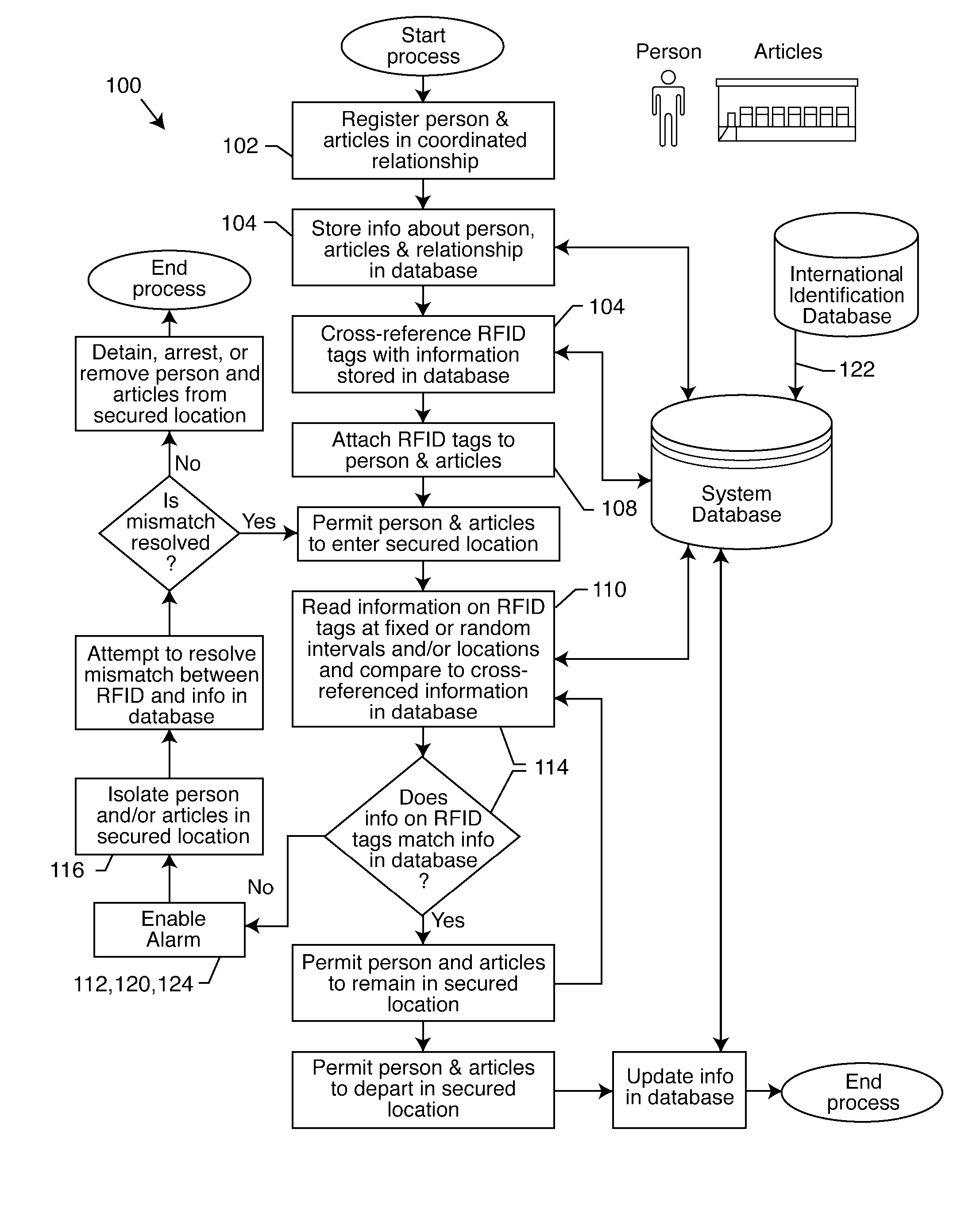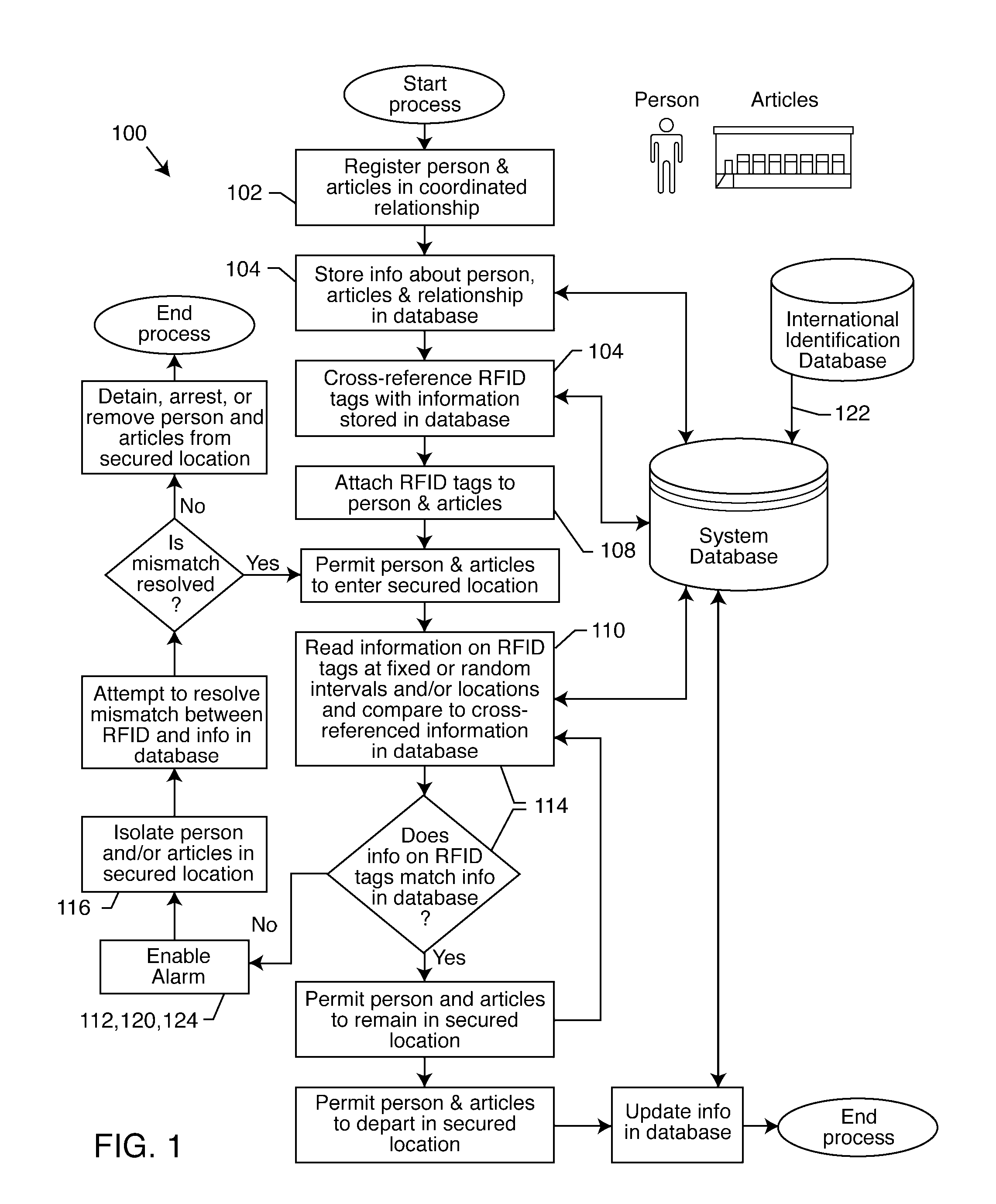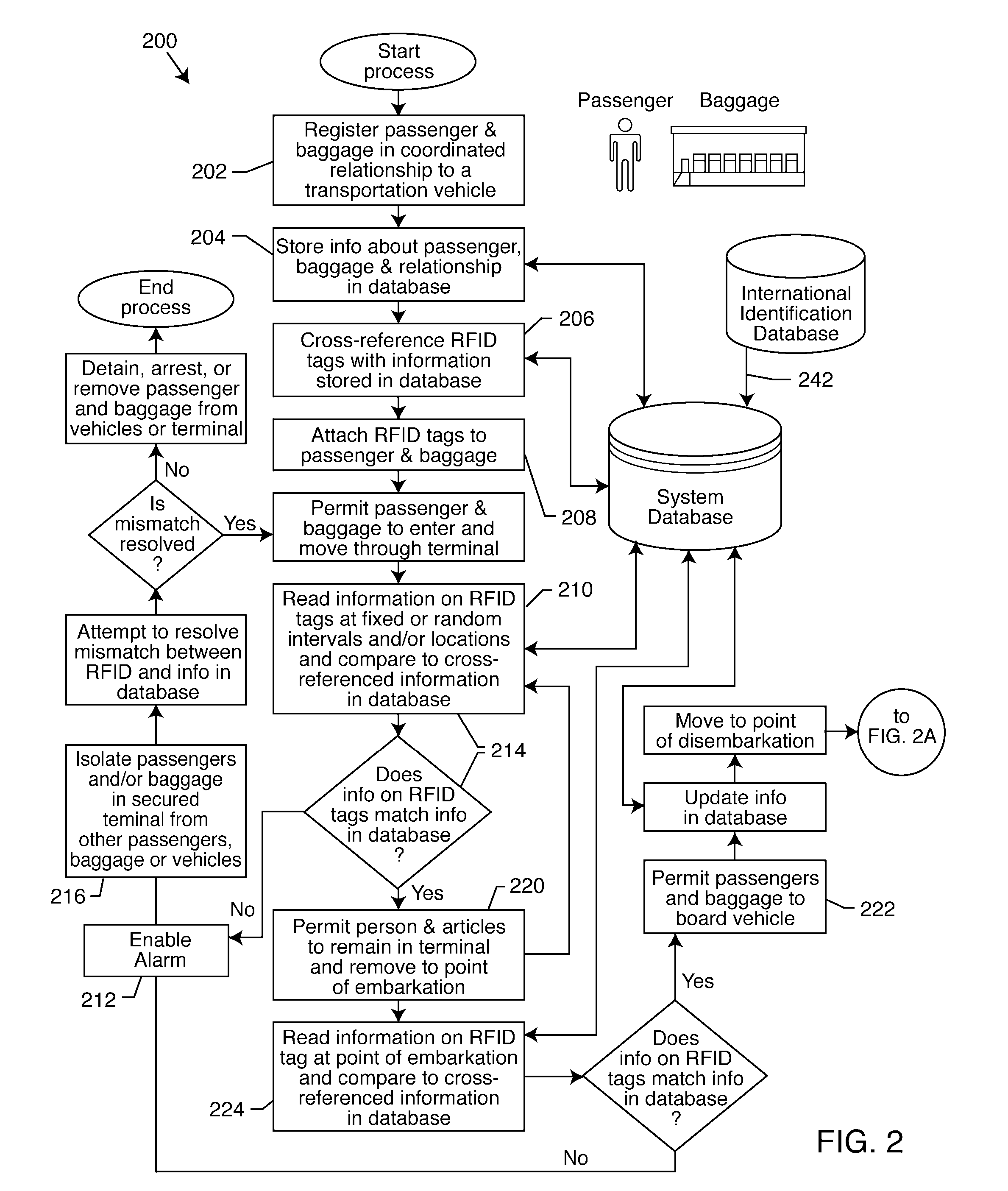Coordinated identification of persons and/or articles via radio frequency identification cross-identification
a radio frequency identification and cross-identification technology, applied in the field of passenger identification, passenger reservation and baggage tracking systems, can solve the problems of limited use of cross-referencing checkpoints, limited major interest in utilizing the internet for tracking baggage, and inflexible system
- Summary
- Abstract
- Description
- Claims
- Application Information
AI Technical Summary
Benefits of technology
Problems solved by technology
Method used
Image
Examples
Embodiment Construction
[0044] The present invention relates to a system and process for identifying and tracking persons and articles having a coordinated relationship to one another. More specifically, the present invention relates to a system and process for identifying and tracking passengers and baggage in relation to a transportation vehicle.
[0045] The most basic embodiment of the present invention, as shown in FIG. 1, is a process for identifying and tracking related persons and articles (100) comprising the following steps:
[0046] registering a person and one or more articles in a coordinated relationship (102);
[0047] storing information concerning the person, the articles and the coordinated relationship in a database (104);
[0048] cross-referencing RFID tags with the information stored in the database (106);
[0049] attaching the cross-referenced RFID tags to the person and at least one of the articles (108);
[0050] reading the RFID tags at random intervals (110); and
[0051] enabling an alarm if...
PUM
 Login to View More
Login to View More Abstract
Description
Claims
Application Information
 Login to View More
Login to View More - R&D
- Intellectual Property
- Life Sciences
- Materials
- Tech Scout
- Unparalleled Data Quality
- Higher Quality Content
- 60% Fewer Hallucinations
Browse by: Latest US Patents, China's latest patents, Technical Efficacy Thesaurus, Application Domain, Technology Topic, Popular Technical Reports.
© 2025 PatSnap. All rights reserved.Legal|Privacy policy|Modern Slavery Act Transparency Statement|Sitemap|About US| Contact US: help@patsnap.com



